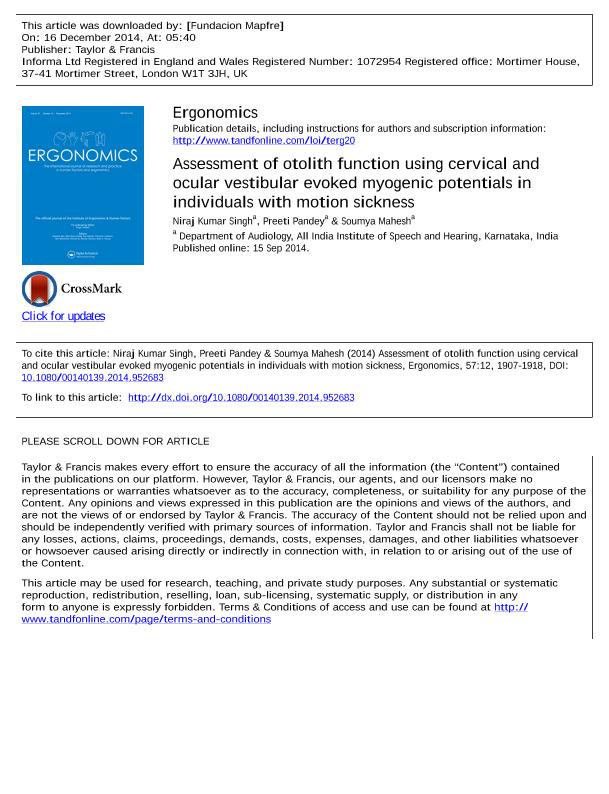Assessment of otolith function using cervical and ocular vestibular evoked myogenic potentials in individuals with motion sickness

Contenido multimedia no disponible por derechos de autor o por acceso restringido. Contacte con la institución para más información.
| Tag | 1 | 2 | Value |
|---|---|---|---|
| LDR | 00000cab a2200000 4500 | ||
| 001 | MAP20140047369 | ||
| 003 | MAP | ||
| 005 | 20141216165953.0 | ||
| 008 | 141216e20141201esp|||p |0|||b|spa d | ||
| 040 | $aMAP$bspa$dMAP | ||
| 084 | $a875 | ||
| 100 | 1 | $0MAPA20140027552$aKumar Singh, Niraj | |
| 245 | 1 | 0 | $aAssessment of otolith function using cervical and ocular vestibular evoked myogenic potentials in individuals with motion sickness$cNiraj Kumar Singh, Preeti Pandey, Soumya Mahesh |
| 520 | $aThe involvement of otolith organs in motion sickness has long been debated; however, equivocal findings exist in literature. The present study thus aimed at evaluating the otolith functioning in individuals with motion sickness. Cervical and ocular vestibular evoked myogenic potentials were recorded from 30 individuals with motion sickness, 30 professional drivers and 30 healthy individuals. The results revealed no significant difference in latencies and amplitudes between the groups (p>0.05). Nonetheless, thresholds were significantly elevated and inter-aural asymmetry ratio significantly higher in motion sickness susceptible group (p < 0.001) for both the potentials. All the individuals in the motion sickness group had high asymmetry ratio at least on one of the two potentials. Thus, reduced response and/or asymmetric otolithic function seem the likely reasons behind motion sickness susceptibility. | ||
| 773 | 0 | $wMAP20100019818$tErgonomics : the international journal of research and practice in human factors and ergonomics$dOxon [United Kingdom] : Taylor & Francis, 2010-$x0014-0139$g01/12/2014 Volumen 57 Número 12 - diciembre 2014 |

